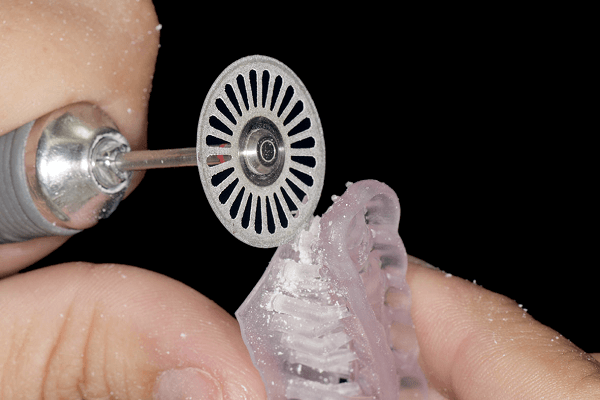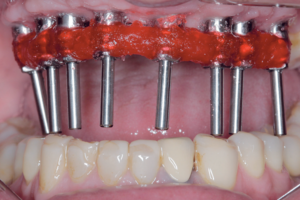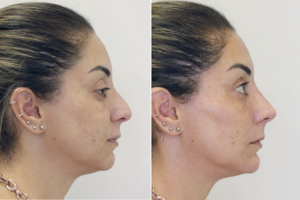RESUMO
O objetivo deste estudo foi apresentar, por meio de um relato de caso clínico, etapas clínicas e laboratoriais para confecção de uma placa miorrelaxante utilizando fluxo digital, através da impressão 3D, descrevendo as etapas clínicas e discutindo aspectos relevantes desse tipo de técnica. Paciente do sexo feminino, com 39 anos, procurou serviço odontológico apresentando dores na face e histórico de fratura no elemento 36. Após o diagnóstico de DTM e parafunção de intensidade elevada, foi proposta a confecção de placa oclusal miorrelaxante superior impressa utilizando fluxo digital. Inicialmente, as etapas de escaneamento intraoral e registro oclusal foram realizadas (3Shape), e o arquivo STL foi gerado e enviado ao laboratório. Após, foi realizada a modelagem placa, seguida da impressão 3D e pós-cura. A instalação e o ajuste oclusal da placa foram realizados após o acabamento e polimento. Baseado no relato de caso clínico, pôde-se concluir que as placas miorrelaxantes impressas são uma alternativa viável às técnicas convencionais para confecção de placas oclusais, com poucos ajustes internos e oclusais, apesar da maior dificuldade de ajuste e do polimento decorrente da característica resinosa da placa. Por fim, estudos longitudinais e um acompanhamento em longo prazo são necessários para determinar a durabilidade clínica da placa oclusal impressa.
Palavras-chave – Disfunção temporomandibular; Impressão tridimensional; Placa oclusal.
ABSTRACT
The aim of this study was to present, through a clinical case report, clinical and laboratory steps for making a myorelaxant occlusal splint using digital flow, through 3D printing, describing the clinical steps and discussing relevant aspects of this type of technique. A 39-year-old female patient sought the dental service presenting with facial pain and history of fracture in the element #36. After the diagnosis of TMD and high-intensity parafunction, it was proposed to make an upper myorelaxant occlusal splint printed using the digital flow. Initially, the steps of intraoral scanning and occlusal registration were performed (3Shape) and the generated STL file sent to the laboratory. Afterwards, the modeling step was performed, followed by 3D printing and post-cure. Installation and occlusal adjustments were carried out, followed by finishing and polishing. Based on this clinical case report, it can be concluded that 3D printed myorelaxant devices are a viable alternative to conventional techniques, with few internal and occlusal adjustments, despite the greater difficulty in this procedure due to the resin characteristics. Finally, longitudinal studies and long-term follow-ups are needed to determine the clinical durability of this 3D printed occlusal splint.
Key words – Temporomandibular disorder; 3D printing; Occlusal splint.
Lorem ipsum dolor sit amet, consectetur adipiscing elit. Ut elit tellus, luctus nec ullamcorper mattis, pulvinar dapibus leo.





